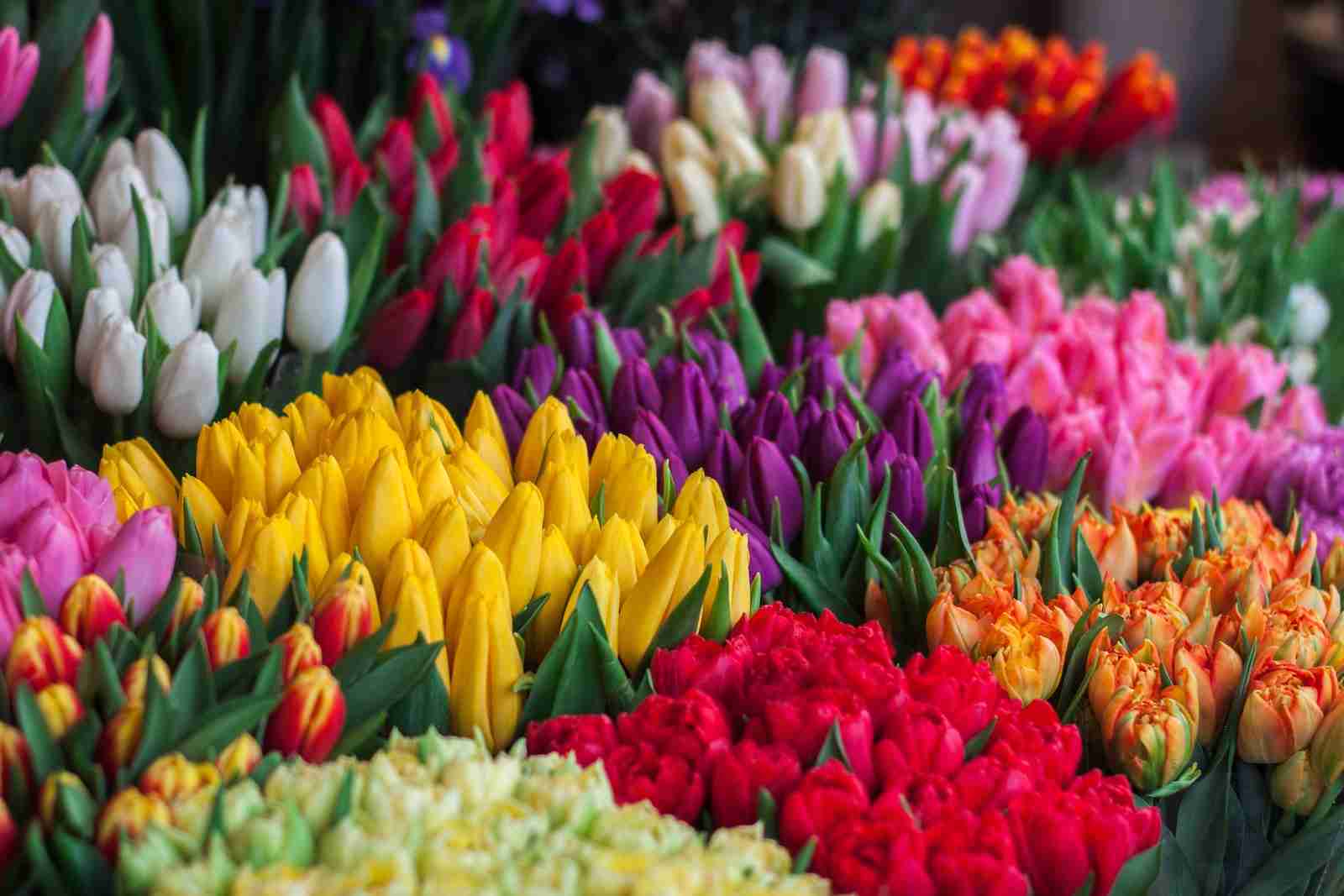26 Fun Facts About Tulips | Discover Floral Joy
1. Tulips originated in Central Asia.
Tulips were originally wild flowers growing in central Asia.
Cultivated by the Turks as early as 1000 AD, the flower’s journey from central Asia to Europe is a significant part of botanical history..
2. They sparked the world’s first economic bubble.
In the 17th century, tulips caused “Tulip Mania” in the Netherlands, creating the world’s first economic bubble.
Prices of tulip bulbs soared and then dramatically collapsed. This event is often cited as a classic example of an economic bubble.
3. They are part of the Liliaceae family.
Tulips belong to the Liliaceae family, which also includes lilies, onions, and garlic.
This botanical family is known for its diverse and economically important species. The connection between tulips and other members of the Liliaceae family is a fascinating aspect of plant biology.
4. Over 3,000 varieties of tulips exist.
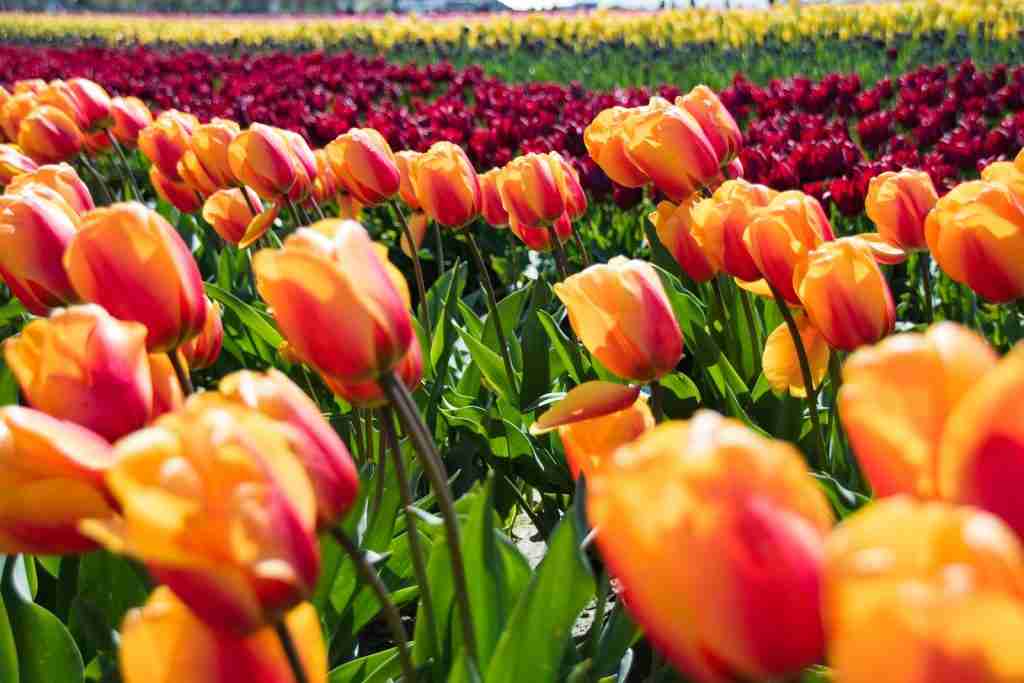
There are over 3,000 registered varieties of tulips, showcasing a wide range of colors, shapes, and sizes.
This diversity makes tulips incredibly popular in gardens and floral arrangements. The vast array of tulip varieties is a testament to their adaptability and appeal.
5. Tulips have a short blooming period, which is one of the fun facts about Tulips.
Tulips have a relatively short blooming period, lasting only about 3-7 days in the spring. This fleeting beauty adds to their allure.
The short bloom time of tulips makes them a symbol of life’s transient nature.
6. ‘Broken tulips’ feature unique color patterns.
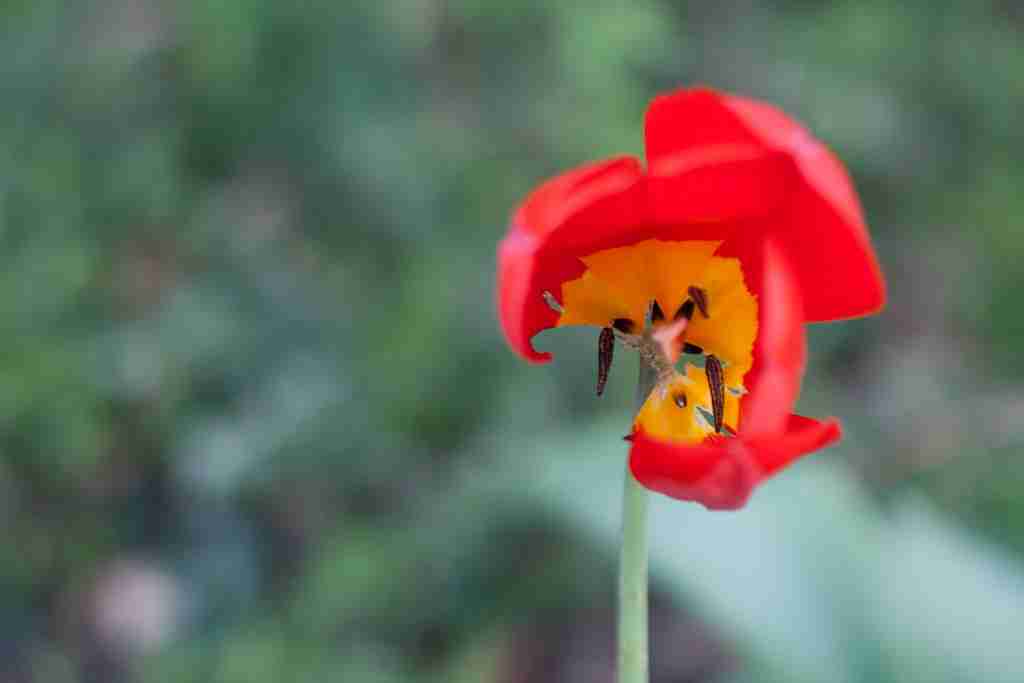
‘Broken tulips’ display striking color patterns due to a viral infection, once highly sought after.
These unique patterns were originally the result of a virus, leading to a fascinating chapter in tulip cultivation. The term ‘broken’ refers to the interruption of the base color by streaks of another color.
7. They were once more valuable than gold.
During the Tulip Mania in the 17th century, some tulip bulbs were more valuable than gold.
This high value highlights the immense popularity and rarity of certain tulip varieties at the time. The economic phenomenon around tulips in the 17th century remains a topic of interest.
8. The Netherlands is the world’s largest commercial producer of tulips.
The Netherlands is renowned for its vast commercial production of tulips, with millions of tulips grown each year.
The country’s association with tulips is a significant part of its cultural identity. The tulip fields in the Netherlands are a major tourist attraction.
9. Tulips symbolize perfect love and fame.
In the language of flowers, tulips symbolize perfect love and fame.
Different colors of tulips also carry their own significance. This symbolism makes tulips a popular choice for expressing feelings and sentiments.
10. What is the meaning behind tulips?
Tulips hold diverse meanings depending on their colors. Generally, they symbolize perfect love and are associated with spring’s renewal.
Red tulips convey deep love, while yellow tulips represent cheerful thoughts and sunshine. White tulips symbolize forgiveness, making them an ideal choice for reconciliation gestures.
11. Tulips were used as food during World War II.
During the harsh conditions of World War II, tulip bulbs were used as a food source in the Netherlands.
This use of tulips as food is a testament to their versatility and the ingenuity of people during difficult times. The bulbs were ground into flour or used as a substitute for onions.
12. The black tulip is a mythical variety.
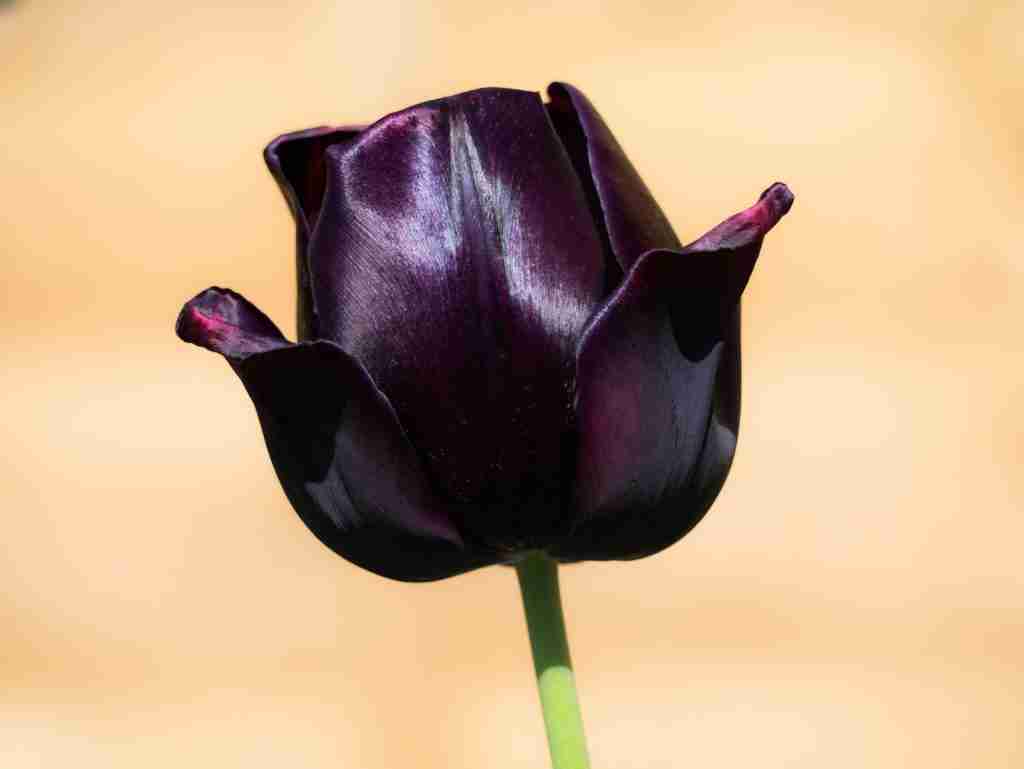
The ‘black tulip’ is a legendary variety that has never truly existed.
The darkest tulips are actually deep purple. The quest for a true black tulip has been a fascinating journey for horticulturists and tulip enthusiasts.
13. They can be propagated through seeds or offsets.
Tulips can be propagated by seeds or by separating offsets from the mother bulb.
This propagation method allows for the cultivation and spread of tulip varieties. The process of growing tulips from seeds or offsets is an important aspect of tulip horticulture.
14. Tulips need a period of cold to bloom.
Tulips require a period of cold dormancy to bloom successfully.
This cold period simulates the natural winter conditions of their native habitat. Understanding this requirement is crucial for successful tulip cultivation in different climates.
15. Tulip festivals celebrate the flower worldwide.
Tulip festivals are held in various parts of the world to celebrate the beauty of these flowers.
These festivals showcase the popularity and cultural importance of tulips. The events often include garden tours, parades, and tulip-themed activities.
16. The shape of tulip petals inspired the turban.

The shape of tulip petals is said to have inspired the design of the Turkish turban.
This influence reflects the cultural significance of tulips in the Ottoman Empire. The resemblance between tulips and turbans is a fascinating example of cross-cultural influences.
17. Are found in a wide range of habitats.
Tulips are adaptable and can be found in a variety of habitats, from mountainous areas to temperate gardens.
This adaptability contributes to their widespread cultivation. The range of habitats where tulips can grow is a testament to their hardiness.
18. Once were a symbol of wealth in the Ottoman Empire.
In the Ottoman Empire, tulips were a symbol of wealth and nobility.
The flower played a significant role in Ottoman art and culture. The historical importance of tulips in the Ottoman Empire adds to their storied past.
19. Tulips can change color.
Some tulip varieties can change color as they age. This color change is due to environmental factors and the maturation of the flower.
The ability of some tulips to change color adds an element of surprise and delight in gardening.
20. The third most popular flower worldwide.
Tulips rank as the third most popular flower in the world, after roses and chrysanthemums.
This popularity is a reflection of their universal appeal and beauty. Tulips’ place as one of the most beloved flowers highlights their enduring charm.
21. Tulips were a favorite subject in Dutch Golden Age paintings.
Tulips were commonly depicted in paintings during the Dutch Golden Age, reflecting their popularity and status.
These paintings often symbolized wealth, luxury, and the fleeting nature of life. The depiction of tulips in art history is a testament to their cultural significance.
22. The tulip is the national flower of Turkey and Afghanistan.
The tulip is recognized as the national flower of both Turkey and Afghanistan.
This designation reflects the historical and cultural ties these countries have with the flower. The tulip’s status as a national flower underscores its importance in these regions.
23. Their petals are edible.
Tulip petals are edible and have been used in culinary dishes for their flavor and presentation.
The use of tulip petals in cooking is a creative way to utilize the flower. Edible tulips add a unique and aesthetic element to gastronomy.
24. Tulip bulbs can replace onions in recipes.
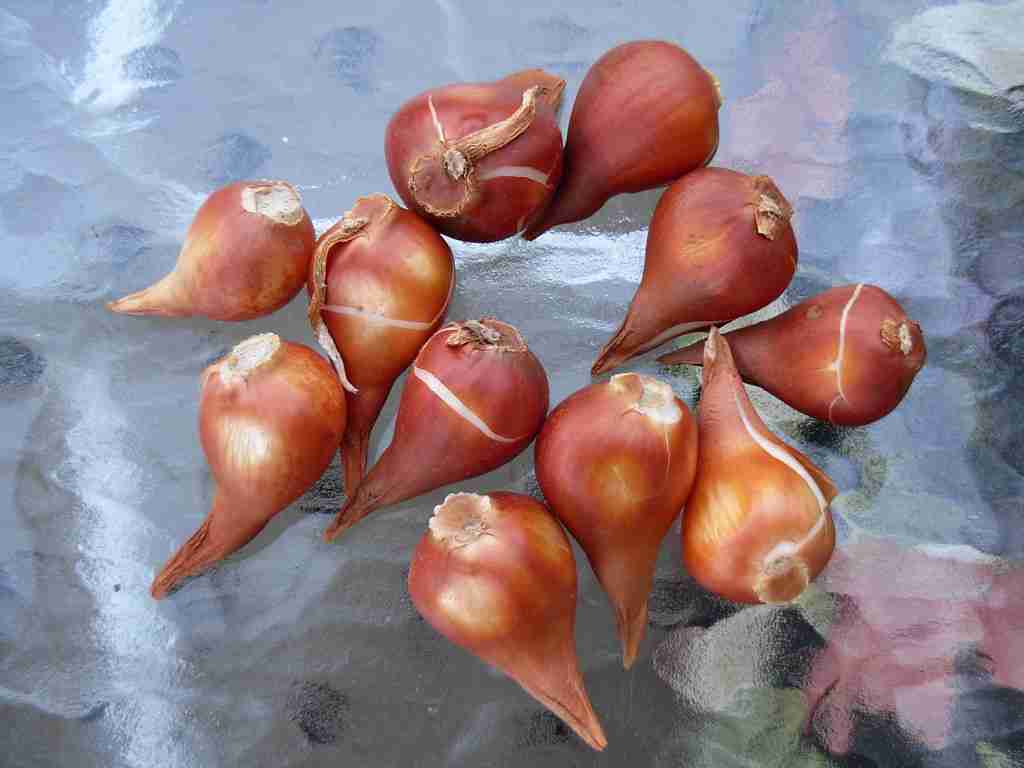
Tulip bulbs can be used as a substitute for onions in various recipes.
This substitution was particularly notable during times of scarcity. The culinary use of tulip bulbs is an interesting aspect of their versatility.
25. Tulips can influence the design of public spaces.
The planting of tulips often influences the design and layout of gardens and public spaces.
Their seasonal blooming can dictate landscaping choices. Tulips play a significant role in urban and garden design, adding color and beauty.
26. Inspired numerous works of literature and music.
Tulips have been the subject of various works of literature and music, symbolizing love, beauty, and the passage of time.
These artistic expressions reflect the flower’s deep cultural resonance. The inspiration drawn from tulips in arts and literature speaks to their enduring allure.
FAQs
Red tulips symbolize deep love, yellow represents happiness, white signifies purity, purple conveys royalty, and pink expresses admiration. Each color carries a unique emotional message.
A white tulip symbolizes purity, innocence, and forgiveness. It is often associated with new beginnings, making it a thoughtful choice for expressions of apology or the start of a fresh chapter.
A pink tulip symbolizes admiration, affection, and a sense of happiness. It is a charming choice to convey heartfelt emotions and positive sentiments towards someone special.
Tulips, in general, symbolize perfect love and the arrival of spring.
Their vibrant colors and graceful appearance make them aesthetically pleasing, adding beauty to gardens and floral arrangements.

